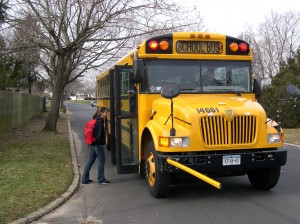 As we watch 25 million American children step onto a big yellow bus every morning, most of us assume someone is doing all that needs to be done to ensure they will arrive at school safely. We assume that our drivers have all the tools and training they need to deliver those children with care, and that our government is enforcing all of the right safety regulations to make this happen.
As we watch 25 million American children step onto a big yellow bus every morning, most of us assume someone is doing all that needs to be done to ensure they will arrive at school safely. We assume that our drivers have all the tools and training they need to deliver those children with care, and that our government is enforcing all of the right safety regulations to make this happen.
Far too often we are not meeting this most basic obligation. Yet it would take just a few straightforward changes to get school bus safety to where it needs to go.
Let’s start with stronger federal rules on bus overcrowding.
Some school bus drivers are required to transport more students than their buses can reasonably carry. Students on these buses are either packed into their seats, or left standing in aisles. Instead of accepting this needless threat to student safety, we must insist that the federal government establish standards to limit school bus capacity.
This overcrowding then plays into another problem facing our drivers. While operating these crowded buses, drivers also must frequently deal with behavioral problems, a challenge compounded by the fact that most drivers are not given the training they need to prevent or diffuse problematic behavior. Drivers need access to this training, and they need the support of the school district whenever they attempt to deal with these situations.
As if this weren’t enough, we also have private for-profit companies that bid for these contracts, offering alleged savings by undercutting the wages and benefits of the men and women we ask to safely transport our kids. We must keep a sharper eye on those who would game the system and hold them accountable.
School bus drivers face a tall list of requirements before getting behind the wheel. Let’s ensure that any new regulations treat drivers fairly by taking into consideration the unique nature of their jobs.
It is time to demand higher safety standards for school buses and better treatment of drivers, for the sake of our children and our communities.